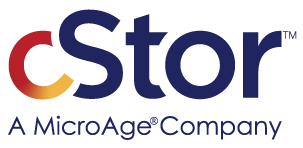Considering your Microsoft Licensing Options for CSP and EA in 2023
By Rick Trujillo, Director of Cloud and Professional Services, MicroAge

Since the inception of volume licensing, Microsoft has developed and offered a multitude of licensing programs designed to cater to customer size and need. Today, the two most popular are the Cloud Solutions Provider program (CSP) and the oldest and still widely recognized, Enterprise Agreement (EA).
The EA has historically been viewed as the crown jewel of programs, sold on the idea of maximum flexibility, version upgrade protection, specialized support, extra benefits, price protection, and volume discounts.
But, the CSP program has quickly become the most appreciated program in the SMB space in terms of low-risk commitment, flexibility, and manageability of seat-based licensing, like Microsoft 365, Dynamics 365, and Power Platform.
Although the information on these programs is well documented and thoroughly explained, the volume of information and frequent changes to the programs cause complications for customers when making proper business decisions. Collectively, the Microsoft partner community makes great efforts to explain the differences and the value of each program to establish trust and credibility with clients. However, often the overall response by customers is still that of confusion.
Post-COVID trending indicates that customers are looking for something low-cost for licensing provisioning point of entry, low risk for manageability, and that provides an exit strategy for the overall agreement. That said, the Enterprise Agreement (EA) client is more frequently starting to evaluate other options, and CSP looks to be the number one contender for solving the problem statements associated with the long-term agreement of the EA.
Recent program changes with the CSP in 2022 indicate that Microsoft recognizes this pattern, and they have adjusted pricing, partner incentives, and other parts of the program to accommodate this new need.
In short, larger customers that tend to qualify for the benefits of a new EA, or an EA renewal, are instead opting for the CSP. The challenge is fully understanding the facts, rules, processes, and options for this type of decision.
Steps to Easing Your Microsoft Licensing Decisions
The MicroAge Licensing Expert team has developed a 10-step process that allows clients to carefully analyze and understand what makes the most sense for their business when it comes to evaluating their current posture, becoming educated on the available licensing programs, and comparing their qualities, support programs, cost optimization, and contract arrangement.
As we move into 2023 and EA customers are looking at their budget, product, and project plans, here are a few of those steps that can help customers with their Microsoft licensing decisions.
Understand and provide the EA renewal date to all stakeholders.
This may seem trivial, but a lot of Microsoft IT Professionals – at least the relevant key players in the business – are completely separated from how licenses are provisioned, the structure of the contract, and the contract negotiations. IT administrators need to be involved so they can offer recommendations on how licensing has truly impacted the business and provide advice on how licensing should play a role in the business in the coming year(s). Understanding the renewal date also allows for team involvement and setting of milestones for reaching the best business decisions for next-gen products and projects. A runway of 4-6 months is ideal when evaluating an EA renewal.
Find a third party to work with.
Although the customer’s current EA provider offers value, it is important to have second opinions on the recommendations. EA Partners often stress the importance of adding and upgrading products, and although there may be more value to leverage in the Microsoft ecosystem (like Microsoft 365 E5), the timing of an immediate purchase is not. It is also important to deconstruct the license plans that are to be considered to make certain that there isn’t something more cost-effective that aligns with the use cases in the customer’s unique environment.
Assessing Support Agreement(s).
Over the years, Microsoft has established an attached rate of support agreement options that, although designed to bring value and benefit, can be costly and not necessarily aligned with customer needs. Evaluation of support ticket volume, quality and severity of tickets, and level of customer self-sufficiency must all be weighed to determine if a Microsoft support agreement is even needed. Third-party options and – in some cases – the free support included within the CSP program may fit the bill and save the customer’s organization a lot of money.
In conclusion, there are many other items to consider and evaluate, but the historically best licensing program may not always be the best option for the Microsoft customer. Working with a trusted, credible, and neutral party to obtain the facts and education needed to mitigate risk is the key to cost-effective and efficient license management in 2023.








